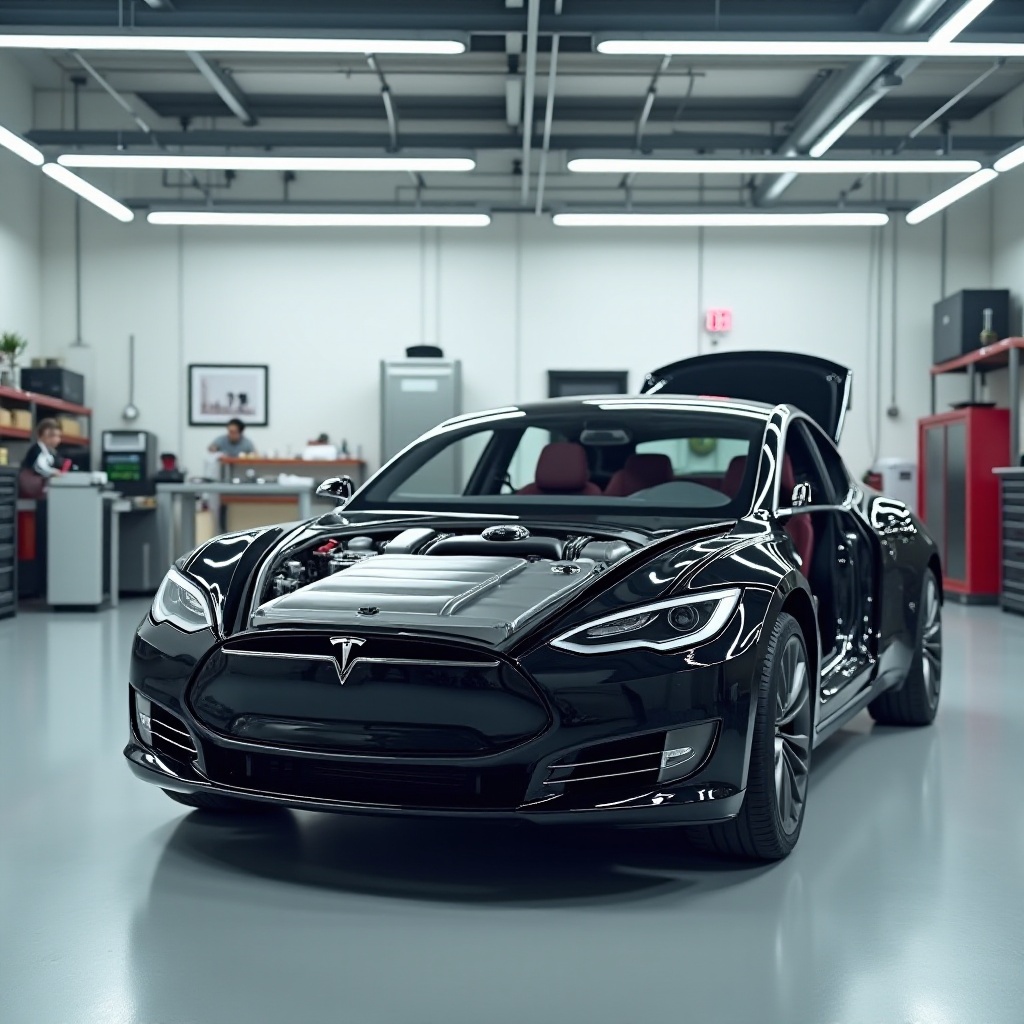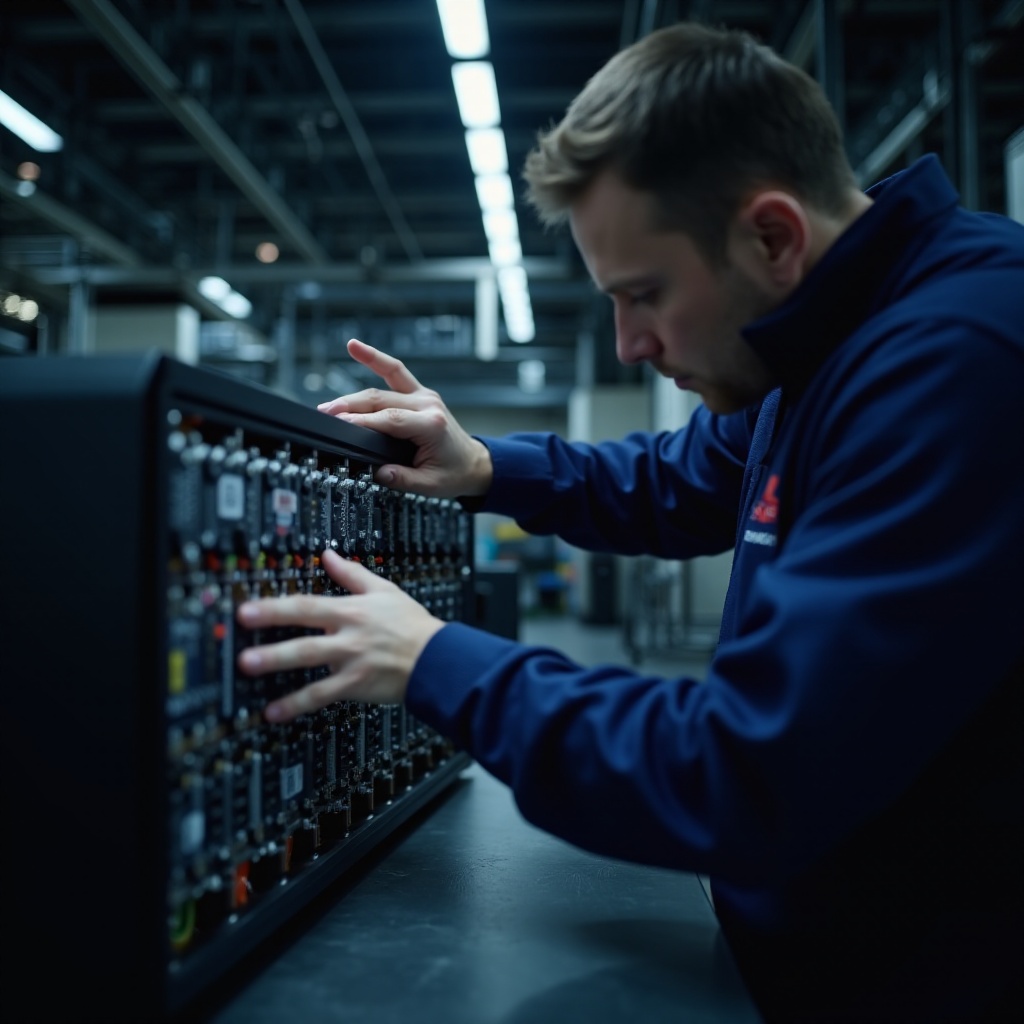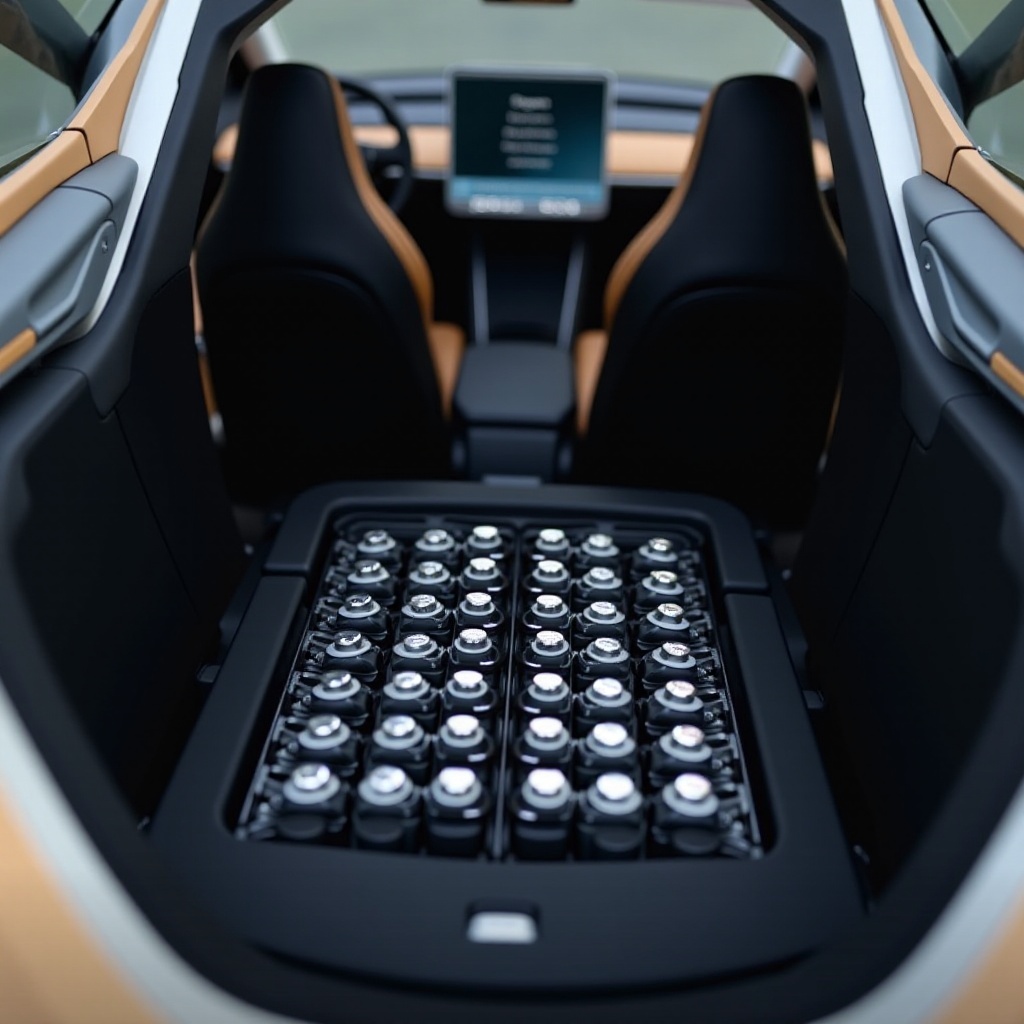Introduction
Electric vehicles (EVs) have transformed the automotive landscape, and Tesla stands at the forefront of this revolution. If you’ve ever wondered ‘how many batteries are in a Tesla?’, you’re not alone. Understanding the intricacies of Tesla’s battery packs reveals much about their efficiency, range, and technological edge. This blog explores Tesla’s battery configurations, capacities, and the advancements that power these impressive vehicles.

Understanding Tesla Battery Packs
Tesla’s battery packs are the brainchild of years of research and collaboration with battery specialists. The design and technology behind these batteries are nothing short of groundbreaking, enabling Tesla to consistently lead the EV market.
What Constitutes a Tesla Battery Pack?
Each Tesla battery pack is a marvel of engineering, consisting of thousands of individual cells organized into modules. These battery cells are connected in series and parallel configurations to create a powerful and efficient energy storage system. The cells themselves, typically cylindrical and lithium-ion-based, are constructed with precision to ensure safety, longevity, and performance.
Transitioning from a general understanding of what constitutes a Tesla battery pack, let’s delve into the specific configurations found in different Tesla models.

Battery Cell Configuration in Tesla Models
The configuration of battery packs varies between different Tesla models, highlighting the brand’s commitment to optimizing performance across its lineup.
Model S and Model X Battery Packs
The Model S and Model X, representing Tesla’s luxury line, incorporate robust battery packs to deliver unparalleled performance:
- Battery Cells: These models primarily use the 18650 lithium-ion cells. Each battery pack in these vehicles comprises around 7,104 cells organized into 16 modules.
- Configuration: The cells are arranged in a unique combination to ensure optimal power output and thermal management. This intricate design supports the vehicle’s high performance requirements.
Model 3 and Model Y Battery Packs
The Model 3 and Model Y are designed with broader market appeal in mind, featuring slightly different battery configurations:
- Battery Cells: These vehicles use the newer 2170 cells, notable for their enhanced energy density and efficiency. The total cell count per vehicle is approximately 4,416 cells.
- Configuration: Organized into 4 different modules, each packed with the requisite number of cells to balance weight and performance, these battery packs ensure reliability and long-range capabilities.
Having outlined the configurations in Tesla’s various models, it’s essential to understand how these configurations influence battery capacity and performance metrics.

Battery Capacity and Performance
A key determinant of an EV’s success is its battery capacity and how it translates to real-world performance.
Impact on Range and Efficiency
- Range: The capacity of Tesla’s battery packs directly impacts the range. The Model S Long Range, for instance, can achieve up to 405 miles on a single charge, a testament to its significant battery capacity.
- Efficiency: Battery efficiency is a hallmark of Tesla’s design philosophy. Models like the Model 3 offer exceptional range with fewer battery cells, thanks to advancements in cell chemistry and thermal management.
Comparison Between Models
When comparing Tesla models, the variation in battery capacity also highlights different performance capabilities:
- Model S and Model X: These models offer extensive ranges and superior acceleration times, benefiting from larger battery packs.
- Model 3 and Model Y: These models are optimized for efficiency and cost-effectiveness, offering impressive range with a slightly lower battery capacity.
Tesla’s consistent strides in battery technology drive improved capacity and performance, marking the brand as a vanguard in the EV industry.
Technological Advancements in Tesla Batteries
Tesla’s collaborative efforts and internal innovations have led to notable advancements in battery technology.
Panasonic and Other Partners
- Panasonic Partnership: Panasonic has been a major partner, supplying high-quality cells. Their collaboration ensures continuous improvements in energy density and manufacturing efficiency.
- Other Collaborations: Tesla also partners with other leading battery manufacturers globally, diversifying supply and fostering innovation.
Innovations in Battery Technology
Tesla’s commitment to innovation is evident in several groundbreaking advancements:
- 2170 Cells: These cells offer a higher energy density than their 18650 predecessors, contributing to improved range and performance.
- 4680 Cells: The latest 4680 cells signify a quantum leap, offering five times the energy capacity and a significant cost reduction. These cells aim to revolutionize future vehicle models and make EVs more accessible.
- Battery Recycling: Tesla’s Closed Loop Recycling Project aims at sustainability, ensuring batteries are recycled efficiently, mitigating the environmental impact.
Concluding the discussion on technological advancements, it’s clear that Tesla’s relentless innovation underpins its leadership in the EV sector.
Conclusion
Tesla continues to redefine what’s possible with electric vehicles through its robust battery technology. From the number of cells to their configuration, every aspect of Tesla’s battery packs contributes to the exceptional performance of its models. Advancements in battery technology promise an even more exciting future for Tesla and its contributions to sustainable transportation.
Frequently Asked Questions
How many batteries does the Model S have?
The Tesla Model S uses approximately 7,104 individual 18650 lithium-ion cells organized into 16 modules.
What is the difference between the 2170 and 4680 battery cells?
The 2170 cells offer improved energy density compared to the older 18650 cells. The 4680 cells signify a substantial upgrade, providing higher energy capacity, improved efficiency, and reduced cost.
How does Tesla recycle its batteries?
Tesla uses a Closed Loop Recycling Project to efficiently recycle battery materials, reducing environmental impacts and promoting sustainability.
